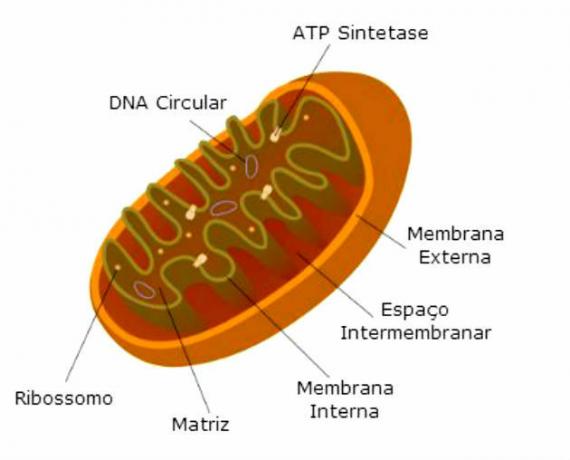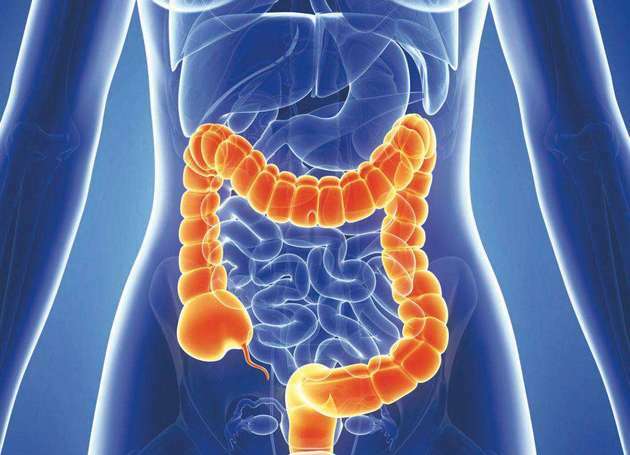At mitochondria they are complex organelles present only in eukaryotic cells.
Your role is produce most of the energy of cells, through the process called cellular respiration.
The size, shape, quantity and distribution of mitochondria vary by cell type. They still have their own genetic material.
Mitochondria structure

Mitochondria are formed by two lipoprotein membranes, one external and one internal:
- outer membrane: similar to other organelles, smooth and composed of lipids and proteins called deporins, which control the entry of molecules, allowing the passage of relatively large ones.
- inner membrane:It is less permeable and has numerous folds, called mitochondrial ridges.
Mitochondrial ridges protrude into the inner part of the mitochondria, a central space called the mitochondrial matrix, which is filled with a viscous substance containing respiratory enzymes that participate in the production process of energy.
In the matrix are found the ribosomes
, organelles that produce proteins needed by mitochondria. They are different from those found in cell cytoplasm and more like bacteria. Another common feature of bacteria and mitochondria is the presence of circular DNA molecules.Cellular respiration

THE cellular respiration it is a process of oxidation of organic molecules, such as fatty acids and carbohydrates, especially the glucose, which is the main source of energy used by heterotrophic organisms.
Glucose comes from food (being produced by autotrophic organisms through photosynthesis) and converted in carbon dioxide and water, producing molecules of ATP (adenosine triphosphate), which are used in various activities cell phones.
This mode of energy production is very efficient, as there is a balance of 38 ATP per glucose molecule at the end of the process.
Glucose degradation involves several molecules, enzymes and ions and takes place in 3 steps: Glycolysis, Krebs Cycle and Oxidative Phosphorylation. The last two phases are the ones that produce the most energy and occur in the mitochondria, while glycolysis takes place in the cytoplasm.
The general chemical equation of the process is represented as follows:
Ç6H12O6 + 6 O2 ⇒ 6 CO2 + 6 H2O + Energy
How did mitochondria come about?
Mitochondria have biochemical and molecular characteristics similar to bacteria, such as the presence of circular DNA and ribosomes. For this reason, scientists believe that its origin is related to ancestral prokaryotic beings.
According to Endosymbiotic Theory or Endosymbiogenesis, ancient prokaryotic organisms would have successfully hosted within the eukaryotic cells of primitive organisms, evolving into current mitochondria.
The same would have happened with the chloroplasts, which resemble mitochondria due to the presence of a double membrane and their capacity for self-duplication.
See too: Prokaryotic and Eukaryotic Cells
Curiosities
- The word mitochondria is derived from the Greek, myths (line/thread) + chondros (granule/grain).
- Mitochondria are spherical or elongated and are approximately 0.5 to 1 µm in diameter. They can represent up to 20% of the total cell volume.
- The DNA of mitochondria is of exclusively maternal origin.
- Mitochondria are also related to the process of cell death by apoptosis.


